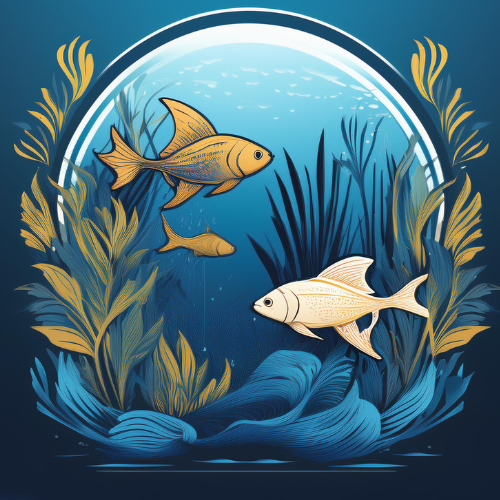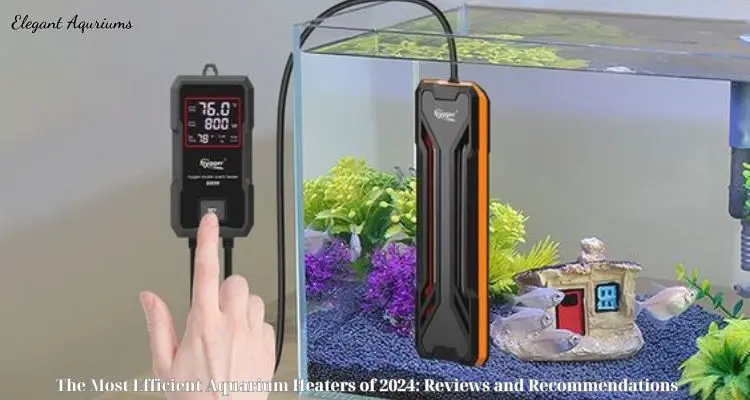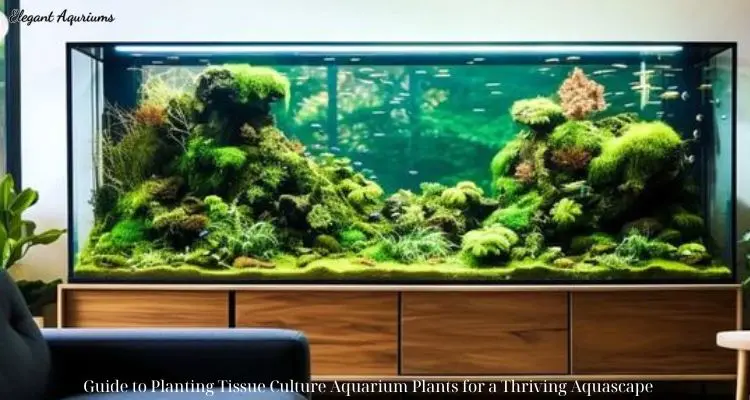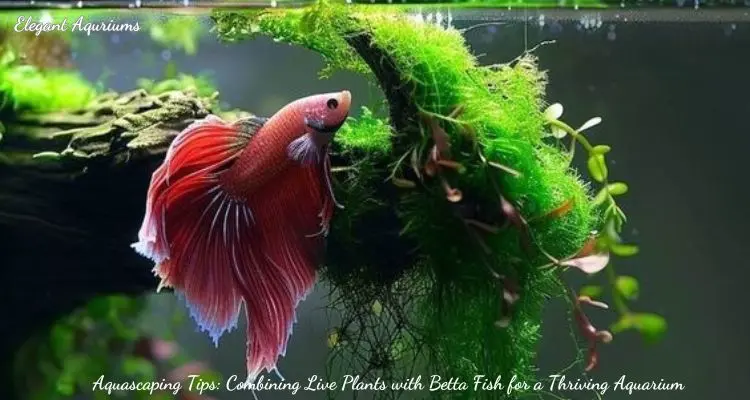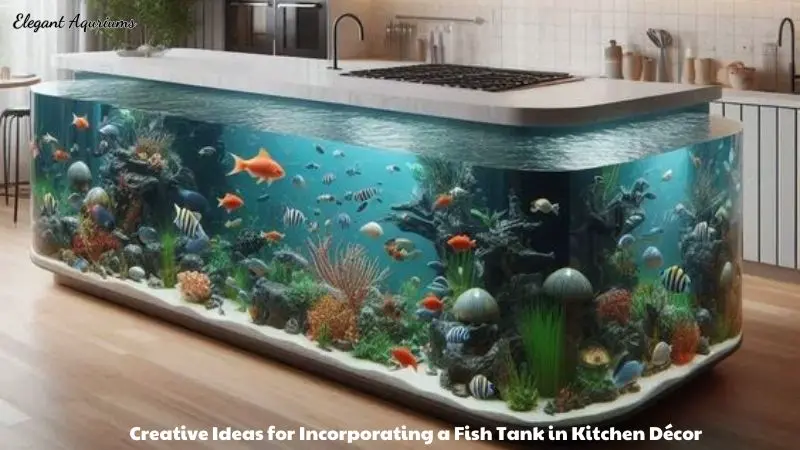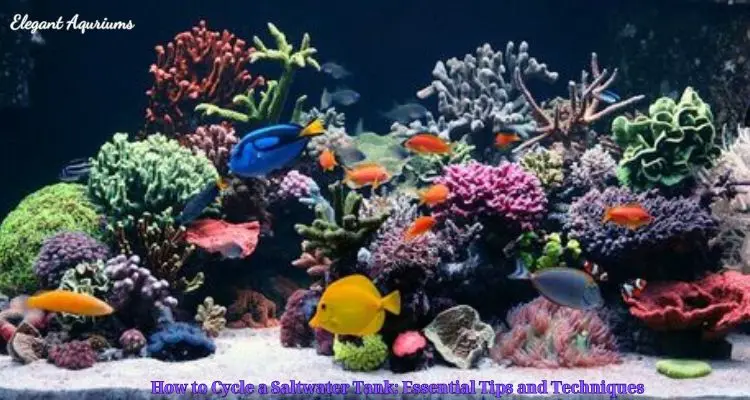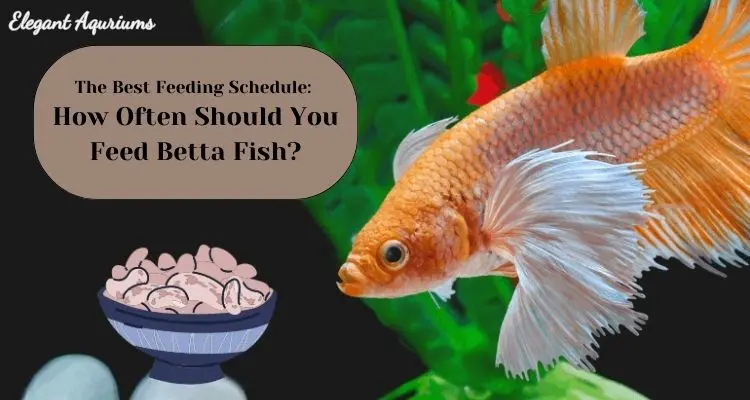Fish and fish varieties
Different Varieties of Goldfish: Which One is Right for Your Tank?
Goldfish have long been a popular choice for aquarium enthusiasts, admired for their beauty, ease of care, and diverse varieties. With so many different types of goldfish available, choosing the right one for your tank can be both exciting and challenging. This guide, Elegant Aquriums will delve into the different varieties of goldfish, their unique characteristics, and what to consider when selecting the perfect goldfish for your aquarium.
Understanding Goldfish Varieties
Goldfish can be broadly categorized into two main groups: single-tailed and double-tailed varieties. Each group includes numerous specific types, each with unique characteristics and care needs.
Different Varieties of Goldfish

Single-Tailed Goldfish
Single-tailed goldfish are closer in appearance to their wild ancestors, the Prussian carp. They tend to be hardier and more active swimmers, making them suitable for larger, more open tanks or ponds.
1. Common Goldfish
- Description: The common goldfish is the most basic variety, typically orange or red but can also come in other colors such as yellow, white, and black. They have a streamlined body and a single, deeply forked tail.
- Care: Common goldfish are very hardy and can tolerate a wide range of water conditions. They can grow quite large, often reaching lengths of 12 inches or more, so they require spacious tanks or ponds.
- Ideal Tank: A minimum of 30 gallons for a single fish, with an additional 10 gallons for each extra fish.
2. Comet Goldfish
- Description: Similar to the common goldfish but with a longer, more deeply forked tail. Comet goldfish are typically more slender and are often found in orange, red, and white colorations.
- Care: Comet goldfish are active swimmers and require plenty of space. They are also very hardy and can thrive in outdoor ponds.
- Ideal Tank: At least 50 gallons for one fish, with additional space for more.
3. Shubunkin Goldfish
- Description: Known for their calico coloration, Shubunkins have a mix of blue, red, orange, yellow, and black spots. They have the same body shape as common and comet goldfish but with the added beauty of their unique patterns.
- Care: Like other single-tailed goldfish, Shubunkins are hardy and active. They do well in both tanks and ponds.
- Ideal Tank: A minimum of 50 gallons for one fish, with additional space for more.
Double-Tailed Goldfish
Double-tailed goldfish are more ornate and have been bred for their unique body shapes and fins. They are generally less hardy than single-tailed varieties and require more careful water quality management.
1. Fantail Goldfish
- Description: Fantails have a rounded, egg-shaped body and a split tail fin. They come in a variety of colors, including red, orange, white, and calico.
- Care: Fantails are hardy compared to other double-tailed varieties but are less tolerant of poor water conditions than single-tailed goldfish.
- Ideal Tank: A minimum of 20 gallons for one fish, with an additional 10 gallons for each extra fish.
2. Veiltail Goldfish
- Description: Veiltails are similar to fantails but have longer, flowing fins that can be twice the length of their bodies. They come in various colors and patterns.
- Care: Veiltails require pristine water conditions and can be prone to fin damage due to their long fins.
- Ideal Tank: A minimum of 30 gallons for one fish, with additional space for more.
3. Ryukin Goldfish
- Description: Ryukins are characterized by their deep bodies, high dorsal fins, and a noticeable hump behind the head. They are available in many colors and patterns.
- Care: Ryukins are hardier than some other fancy varieties but still require good water quality and a spacious tank.
- Ideal Tank: A minimum of 20 gallons for one fish, with additional 10 gallons for each extra fish.
4. Oranda Goldfish
- Description: Orandas have a distinctive wen, a fleshy growth on their heads, giving them a unique appearance. They come in various colors, including red, orange, black, and calico.
- Care: The wen can make Orandas prone to infections and requires good water quality. They are also sensitive to poor water conditions.
- Ideal Tank: A minimum of 30 gallons for one fish, with additional space for more.
5. Ranchu Goldfish
- Description: Ranchus have a similar body shape to Orandas but lack a dorsal fin, giving them a smooth, arched back. They are often referred to as the “King of Goldfish” in Japan.
- Care: Ranchus are delicate and require stable water conditions. They are best kept in a species-only tank to avoid injuries from more active fish.
- Ideal Tank: A minimum of 20 gallons for one fish, with additional 10 gallons for each extra fish.
6. Lionhead Goldfish
- Description: Lionheads are similar to Ranchus but with a more pronounced wen. They also lack a dorsal fin and have a rounded, egg-shaped body.
- Care: Like Ranchus, Lionheads require pristine water conditions and careful handling to prevent injuries.
- Ideal Tank: A minimum of 20 gallons for one fish, with additional 10 gallons for each extra fish.
7. Pearlscale Goldfish
- Description: Pearlscales have a distinctive appearance with their rounded bodies and scales that look like pearls. They come in various colors, including red, white, and calico.
- Care: Pearlscales are prone to swim bladder issues due to their body shape and require a carefully managed diet and good water conditions.
- Ideal Tank: A minimum of 20 gallons for one fish, with additional 10 gallons for each extra fish.
8. Bubble Eye Goldfish
- Description: Bubble Eye goldfish are one of the most unique varieties, characterized by their large, fluid-filled sacs under their eyes. They come in several colors, including red, orange, and calico.
- Care: Bubble Eye goldfish are very delicate and require a tank free of sharp objects that could puncture their eye sacs. They need very stable water conditions.
- Ideal Tank: A minimum of 20 gallons for one fish, with additional 10 gallons for each extra fish.
9. Celestial Eye Goldfish
- Description: Celestial Eye goldfish are known for their upward-facing eyes and lack of a dorsal fin. They have a streamlined body and come in various colors.
- Care: These goldfish require a peaceful environment with good water quality and no sharp objects in the tank.
- Ideal Tank: A minimum of 20 gallons for one fish, with additional 10 gallons for each extra fish.
Choosing the Right Goldfish for Your Tank
Selecting the right goldfish variety for your tank involves considering several factors, including the size of your tank, your experience level, and the specific needs of the fish.
Tank Size
- Small Tanks (20-30 gallons): Suitable for one or two smaller double-tailed goldfish varieties like Fantails, Ryukins, and Pearlscales.
- Medium Tanks (30-50 gallons): Can accommodate a small group of double-tailed goldfish or a single large single-tailed goldfish like a Comet or Shubunkin.
- Large Tanks (50+ gallons): Ideal for larger groups of goldfish or more active single-tailed varieties.
Experience Level
- Beginner: Hardy varieties like Common Goldfish, Comet Goldfish, and Fantail Goldfish are good choices.
- Intermediate: Varieties like Ryukin, Oranda, and Shubunkin offer a bit more challenge but are still manageable with some experience.
- Advanced: Delicate varieties like Ranchu, Lionhead, Bubble Eye, and Celestial Eye require meticulous care and stable water conditions.
Specific Needs
- Active Swimmers: Single-tailed varieties like Common, Comet, and Shubunkin goldfish require plenty of swimming space.
- Ornamental Appearance: Double-tailed varieties like Oranda, Ranchu, and Veiltail offer unique and beautiful appearances but require careful maintenance.
- Special Care: Varieties with specific needs, such as Bubble Eye and Celestial Eye, need a carefully controlled environment to prevent injuries and stress.
Care Tips for All Goldfish Varieties
Regardless of the variety you choose, some general care tips apply to all goldfish to ensure they remain healthy and happy.
Tank Maintenance
- Regular Water Changes: Perform weekly water changes of about 25-30% to keep the water clean and free of harmful toxins.
- Filtration: Use a high-quality filtration system to handle the significant waste production of goldfish. Consider a filter with both mechanical and biological filtration capabilities.
- Water Testing: Regularly test the water for ammonia, nitrites, nitrates, and pH levels to ensure a stable environment.
- Temperature Control: Maintain the water temperature within the ideal range for your specific goldfish variety. Most goldfish thrive at temperatures between 65°F to 75°F (18°C to 24°C), although some fancy varieties may prefer slightly warmer water. Avoid sudden temperature fluctuations.
Diet and Feeding
- Balanced Diet: Provide a balanced diet consisting of high-quality goldfish pellets or flakes. Supplement their diet with occasional treats like brine shrimp, bloodworms, and blanched vegetables (peas, spinach).
- Avoid Overfeeding: Feed your goldfish small amounts 2-3 times a day, ensuring they consume the food within 2-3 minutes. Overfeeding can lead to water quality issues and health problems.
- Soaking Dry Food: Pre-soak dry food to prevent it from expanding in the fish’s stomach, which can cause digestive issues.
Tank Setup
- Substrate: Choose a smooth, rounded substrate to prevent injuries to your goldfish. Gravel or sand can be used, but avoid sharp or jagged materials.
- Decorations: Use smooth, safe decorations and avoid sharp objects that could harm delicate goldfish varieties like Bubble Eye and Celestial Eye. Provide hiding spots and visual barriers to reduce stress.
- Plants: Live plants like Anubias, Java Fern, and Hornwort can enhance the tank’s aesthetics and provide enrichment for your goldfish. Ensure the plants are sturdy and not easily uprooted by the fish.
Health Monitoring
- Regular Observation: Observe your goldfish daily for signs of illness or stress, such as changes in behavior, clamped fins, or unusual spots and lesions.
- Quarantine New Fish: Always quarantine new fish for at least 2 weeks before introducing them to your main tank to prevent the spread of diseases.
- Treatment of Illnesses: Be prepared to treat common goldfish illnesses like ich, fin rot, and swim bladder disease. Maintain a first aid kit with necessary medications.
Special Considerations for Different Varieties
Each goldfish variety has specific care considerations that should be taken into account:
Common and Comet Goldfish
- Space Requirements: These active swimmers need large tanks or ponds to thrive. Provide plenty of open swimming space.
- Robust Health: Common and Comet goldfish are hardy and less prone to health issues compared to fancy varieties.
Fantail and Veiltail Goldfish
- Moderate Space Needs: While not as active as single-tailed goldfish, they still require adequate space to swim comfortably.
- Fin Care: Their long fins are susceptible to damage, so avoid sharp objects in the tank.
Ryukin and Oranda Goldfish
- High-Quality Diet: Provide a varied and nutritious diet to support their growth and wen development.
- Water Quality: These varieties are more sensitive to poor water conditions, so maintain excellent water quality through regular maintenance.
Ranchu and Lionhead Goldfish
- Pristine Water: These delicate varieties require stable and clean water conditions. Regular water changes are crucial.
- Gentle Environment: Avoid keeping them with more active or aggressive fish to prevent stress and injuries.
Bubble Eye and Celestial Eye Goldfish
- Safe Tank Setup: Ensure the tank is free of sharp objects that could puncture their delicate eye sacs.
- Low-Flow Filtration: Use gentle filtration to avoid strong currents that can be harmful to these delicate fish.
Pearlscale Goldfish
- Swim Bladder Issues: Their round bodies make them prone to swim bladder problems. Feed them a diet low in air and fiber to reduce the risk.
- Gentle Handling: Handle Pearlscales with care to avoid stressing them.
Conclusion
Goldfish are diverse and fascinating, each variety offering unique charm and challenges. Understanding their specific care requirements allows you to create a thriving, beautiful aquarium that suits both your preferences and your fish’s needs.
When choosing a goldfish, consider your tank size, experience level, and the care needs of each variety. Whether you choose the hardy Common Goldfish, the elegant Fantail, or the unique Bubble Eye, providing the proper environment and care ensures they live long, healthy lives.
